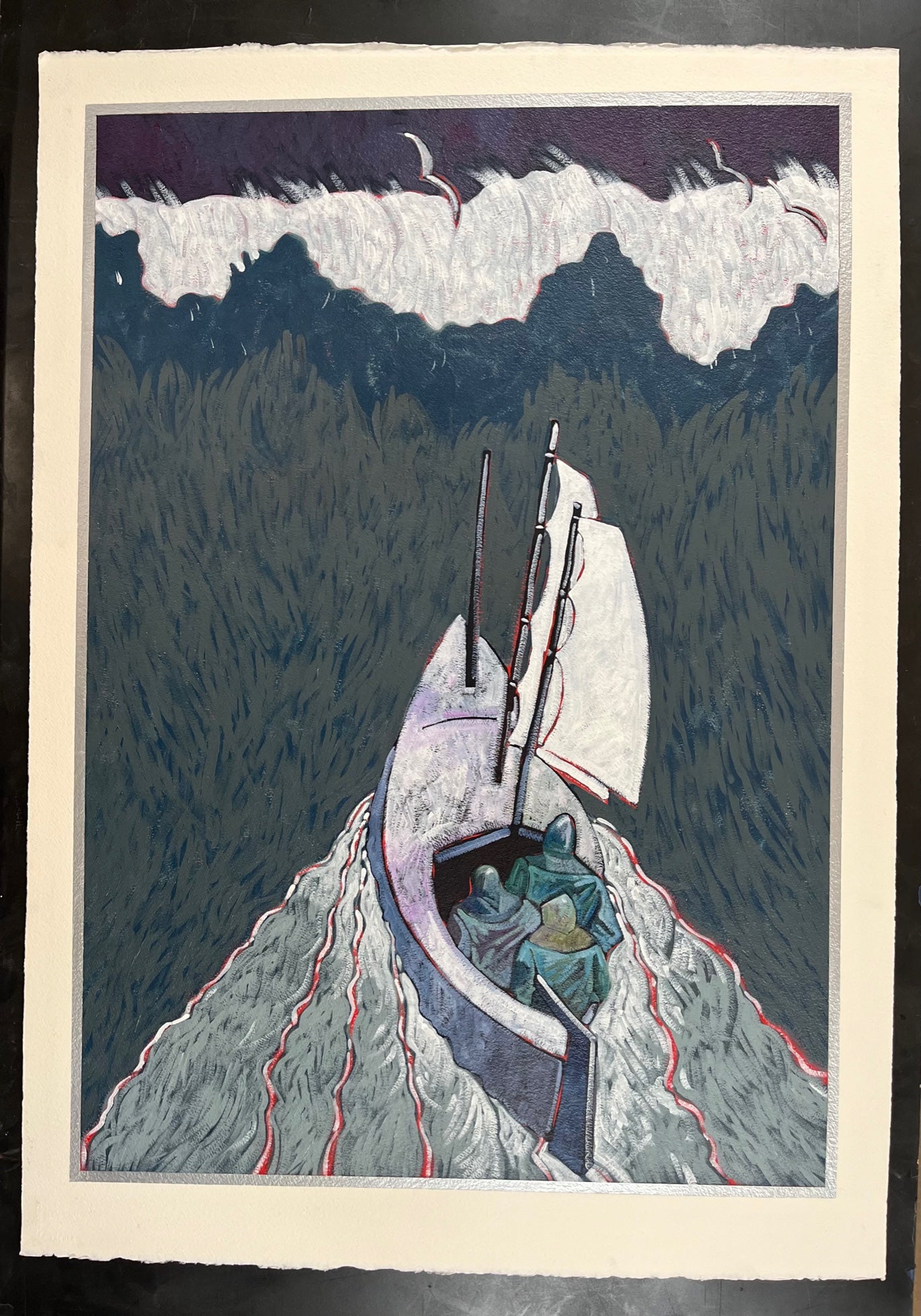The Great Wave
The Great Wave
Acrylic on Paper and 47" x 34" Framed.
As the six men were sailing towards South Georgia Island they saw a break in the weather; it appeared as if the sun was breaking through the clouds. Excitedly, the men prepared their sextant to take a reading so that they could determine where they were. Only then did they realize that what they took to be a break in the clouds was actually the tip of a massive wall bearing down on them. Had the boat floundered all hope would be lost. Holding on as tight as they could, this huge wave crashed over their boat but failed to sink it.
The backdrop of the Imperial Trans-Antarctic Expedition came down to three expedition leaders, Robert Falcon Scott, Roald Amundsen, and Ernest Shackleton, who all tried to become the first man to stand at the South Pole.
In 1907 Shackleton and three men got within 100 miles of the pole before turning back; for this achievement Shackleton was knighted.
Two expeditions, one British, under Scott, and one Norwegian, under Amundsen, finally made it to the pole. The winner was Amundsen who arrived at the pole in December, 1911. Scott and his four comrades gained the pole in January, 1912, but all five men died on the return journey.
Having lost the pole to Amundsen, Shackleton made a plan to cross the continent of Antarctica; an expedition, which was dubbed The Imperial Trans-Ant arctic Expedition, left England in 1914 and eventually entered the pack ice of the Weddell Sea. Their ship, the ENDURANCE, was beset by ice in early 1915 and the 28 men had to endure 10 months of drifting with the ice before the ENDURANCE was crushed and sank.
The world scene had changed as World War I had begun and England could not be bothered with 28 men lost in the south polar regions; Shackleton and his men were on their own.
Now living on ice flows, the men slowly drifted with the ice northward towards warmer seas. Soon the ice began to break up and the men had to take to their three whaleboats, the DUDLEY DOCKER, the STANCOMB WILLS, and the JAMES CAIRD (all named after benefactors of the expedition).
The men and their three boats battled the elements until they were able to clear the ice and land on a rocky, isolated island called Elephant Island.
Knowing that no one was going to come looking for them, Shackleton picked 5 men and together they set sail in the JAMES CAIRD for South Georgia Island which lay 800 miles across the most treacherous seas in the world; but it was their only chance as there was a whaling station on the north side of the island.
After a 14 days ordeal the six men landed on the south shore ofSouth Georgia Island. However, the whaling station was on the north shore so Shackleton and two men, Frank Worsley and Thomas Crean, were forced to march across the island, non-stop, to seek help. Amazingly the trio made it to the whaling station and after several tries they finally were able to get a small ship to Elephant Island and rescue all the men who they had left there months before.
Although the expedition itself must be considered a failure as it did not accomplish its goals, the survival efforts of Shackleton and his men made this one of the greatest tales of survival in the annals of exploration.
Shackleton would return south one last time when he suffered a fatal heart attack; he was buried on South Georgia Island.
+ Share


